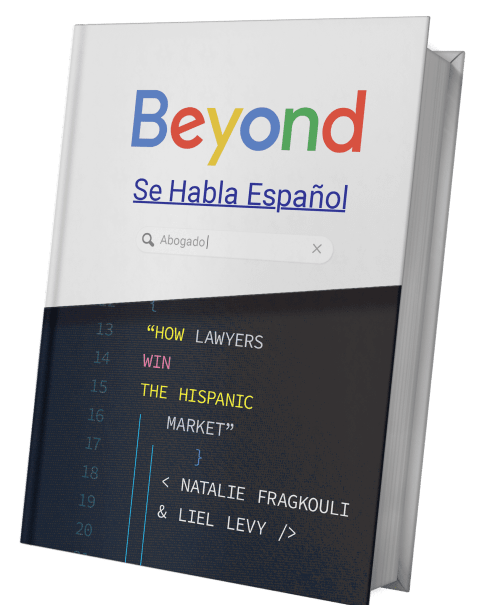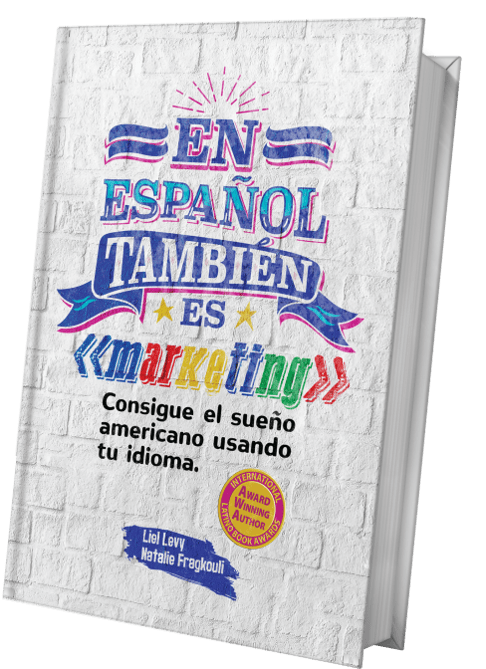In today’s article, we’ll explore the different types of Search Network Ads. What are they and how to use them for your law firm’s digital marketing? Tips and best practices for your legal digital strategy.
What is the Search Network? When referring to the Google Search Network, we mean a group of websites where you can perform online search queries, and you can show Ads. It includes the SERPs (search engine result pages), Google Images, Maps, Shopping, and other Google search partners, such as YouTube, and hundreds of other non-Google websites (could be directories or pages related to a viewer’s browsing). When you choose to become an advertiser on Google’s Search Network, you can select where you want to show your Ads for terms related to your relevant keywords. Let’s dive into the various possibilities and explore the options that are relevant to your law firm’s digital marketing.
What are the different Ad types you can use for your law firm’s PPC campaigns on the Search Network?
1. Text Ads
Search Network Text Ads show above or below the organic results on the SERPs. You might have noticed that sometimes multiple advertisers might show Ads, on top of the page, and at the bottom, while in other cases there is one Ad or even no Ads. Why does this happen? It usually reflects the importance of a specific keyword and the competitiveness of the market. If, for example, you are searching for a Car Accident Attorney Near Me, and you live in New York, you will probably see multiple Ads on the top and bottom part of the page. What does this mean if you want to start a PPC campaign for your law firm? Probably, that the Cost Per Click will be very high because of the high intent nature of the search term, and the competitive scheme of the market. Is there a way to work this around? Well, quality score and Ad longevity count, but our suggestion would be to look into Hispanic PPC for your law firm. Spanish speaking audiences represent a great opportunity, as they represent a significant percentage of the population, mobile native (mobile search means higher intent), and they tend to click more often on paid Ads.
What do you need to include in your Text Ads?
- Headline
Your headlines should match the search intent. If a searcher is specifically looking for a Workers Compensation Attorney or Abogado De Lesiones De Trabajo, there’s no point to show your Ads for a different practice area. Your quality score will get penalized, and your Ads budget will go to places that don’t convert. You can enter three headlines, and you can add up to 30 characters to each of them. These might show differently according to device usage.
- Display URL
It indicates the final destination once the searcher clicks on your Ad. It’s usually in green color and consists of your domain and the path fields. The path fields should be indicative of the page they’ll be taken to, and it doesn’t have to match the final URL, but it should be indicative of your service and helpful to the user. Each path can have up to 15 characters.
- Description
You should use the description field to describe the service you are providing. We strongly recommend you to add a call to action in the description, relevant to your preferred CTA. For example, your law firm’s description could include: “call now for a free case evaluation”.
Below you can find an example of a text Ad on a SERP and the length limits:
Tip: Don’t forget to add Ad Extensions. In our previous article, we covered the topic of Ad Extensions for your legal digital marketing.
2. Call Ads (previously referred to as Call-only Ads)
The name change signals a change in the actual product. Google recently enriched the Call Ads with a URL extension. We’ve dedicated a blog post to this change and the added value of Call Ads for your law firm, and we’d strongly suggest you read it as it’s full of valuable information. Despite that, let’s summarize the best practices that you should follow, adding Call Ads to your legal digital marketing.
- You should add Call Ads to your strategy, but not as a standalone strategy. Use them in combination with Text Ads, Video Ads, and others, following a holistic approach for your law firm’s SEM.
- Use the recently added URL feature. It’s a critical improvement, as it increases your Call Ads’ visibility (they occupy a larger part of the screen). It also makes your Call Ad relevant to searchers who are not necessarily looking to call a law firm (they can visit your website and fill out a firm).
- Don’t underestimate the importance of Spanish speaking clients. Call Ads are particularly important for mobile devices, and US Hispanics are mobile power users.
- Ensure that you deliver a top-quality calling experience to your prospective customers. It’ll be the first impression they get about your law firm, and it might be a deciding factor for their case.
3. Video Ads
With Google Video Ads, you can create video campaigns, targeting prospective clients on YouTube and other video partners sites. Google offers multiple Video ad formats, such as skippable and non-skippable in-stream Ads, video discovery Ads, bumper Ads, outstream ads, and masthead Ads. Which ones are relevant to legal digital marketing? We’ll concentrate on non-skippable in-stream, bumper, and video discovery Ads.
- Non-skippable in-stream and Bumper Ads
They are 15 seconds (non-skippable) or 6 seconds (bumper) Video Ads that play on Videos, either at the beginning, the middle, or the end. What’s important with these formats is that viewers don’t have the option to skip your ad. This allows you to convey a quick and effective message that is viewed by default. If you don’t collaborate with a video agency, or you don’t have specialized video skills, Google’s got your back with the new Video Builder tool. There, you can create 6 or 15 seconds videos, ideal for non-skippable instream and bumper Ads, using your assets and a variety of free resources.
Tip: Use this Ad format to create brand awareness for your law firm, and increase your reach in your local community. Google charges on CPM bidding, so you will pay according to impressions.
- Video Discovery Ads
Video Discovery Ads are shown in places of discovery, such as next to related YouTube videos, as part of search results on the platform, or the YouTube mobile homepage. Your law firm’s ad will consist of a thumbnail and additional, descriptive text. Viewers will only watch your video if they click on your ad. Why is this important? Because it shows intent. If, for example, somebody searches for a video related to domestic violence. You run a Video Ad promoting your law firm’s related services, and the searcher clicks. It’s possible that the viewer could be interested in your legal services, and he could convert to a new case.
Tip: This Ad format is designed to promote services and lets the viewers consider your legal services for their needs. Note that Google will charge you on a CPC basis, so only whenever someone clicks.
Below you can get a preview of how Video Discovery Ads look:
What are our key takeaways?
- It all starts with text Ads on the SERP. Pay attention to every single detail, create engaging headlines, relevant and unique Ad copies, and add the right call to action for each one of your law firm’s Ads. Make sure that you proofread everything and that you deliver the right message to the right audience.
- Think holistically. It starts with text Ads, but it doesn’t end there. Add Call and Video Ads to your PPC campaigns for optimized conversions and more signed cases. Not every searcher is the same, so ensure that you are targeting them appropriately.
- Utilize the extra tools Google is offering, such as the Video Builder and the Ads extensions.
- Use high intent keywords, and carefully crafted negative keywords lists, in English and Spanish. Hispanics represent a great opportunity for every law firm, and the Spanish CPC is relatively lower compared to English. If you need assistance don’t hesitate to contact us, we, at Nanato Media, are the bilingual digital marketing experts.
- Test, test, and then test some more. Google is an ever-evolving environment, and what worked yesterday might stop working tomorrow.



